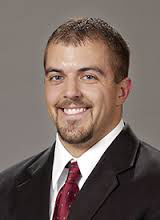“Coach’s Corner” is an interview series conducted by Omegawave’s Customer Experience Manager, Tim Rusbasan. In this installment, Tim catches up with Jim Snider, a Strength and Conditioning Coach for men’s and women’s hockey at the University of Wisconsin and operator of the Neuro Explosion performance facility in Madison, WI.
Tim Rusbasan: What training or performance issues did you originally think Omegawave would help you address?
Jim Snider: Originally, I wasn’t looking for the Omegawave to “address” anything, but I was intrigued by the system and its ability to tell me more about how my athletes were responding to the training stimulus I was imposing on them. It was more of a way to evaluate my training process. Also, the basis behind the system and the way Omegawave and Val [Nasedkin] thought about the training process as a whole led me to gravitate towards the system. I think “system” is the key word, because unfortunately it’s not a magical box—contrary to the way some people might view it. It does, however, provide you with some very in-depth information, provided you allow yourself to unlock your own personal biases and take a more global look at the adaptation process as the key to performance.
TR: Did anything surprise you about the data when you first started using Omegawave, and if you could go back to this time and give yourself any advice about how to best apply the technology, what would that advice be?
JS: At the beginning, everything surprised me—I was like Holy s**t what the [bleep] is all this, how can it really tell me all this??? But really it was an eye opener about looking deeper into how each individual responds to training differently, and that adaptation really is a variable process among each athlete. For example, looking at how athletes respond differently to recovery modalities, specifically ice baths. This is a typical and frequently used modality (unfortunately, too often in my opinion—but that’s a whole different topic). But, using the Omegawave allowed me to look and see if guys were really recovering or responding positively from ice baths and what adaptations where occurring. Lo and behold, guys responded differently—some positively, while others it drove them deeper into autonomic fatigue. That’s a big deal if you are using that to recover for an important event coming up in the next day or two.
The best advice I would give myself is that Omegawave is not telling me not to do something, it’s just providing me with some information as to what is happening and what is the “cost of doing business.” It’s kind of like a map (an actual paper one, not the beautiful young lady directing you from your phone), giving you guidance or a route to take, but in the end you have to drive the car and things might happen on the way that you have to respond to or that will make you consider taking an alternate route. Sometimes you want the cost to be fairly high, and other times you don’t—but that is for you as the coach or practitioner to decide. [Omegawave] is a great tool to help you make decisions.
TR: What has been the biggest advantage of utilizing Omegawave within your “system”?
JS: Opening my eyes and mind to a different way of thinking is the biggest thing. Allowing me to evaluate the dose/response I am administering. Also, being able to “individualize” and optimize training for my athletes during the competition season. It gives me an internal look as to what’s going on inside the athlete from an objective standpoint and allows me to ask them further, more educated questions if need be.
For more from Coach Snider, see “On Ice & Steel: Training Insights from Strength Coach Jim Snider.”
